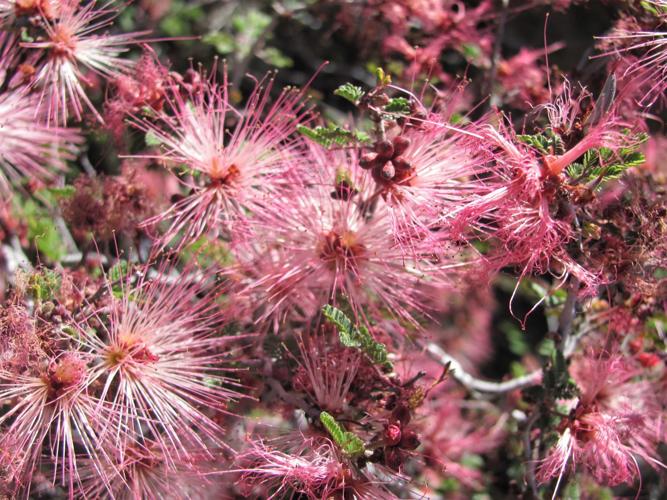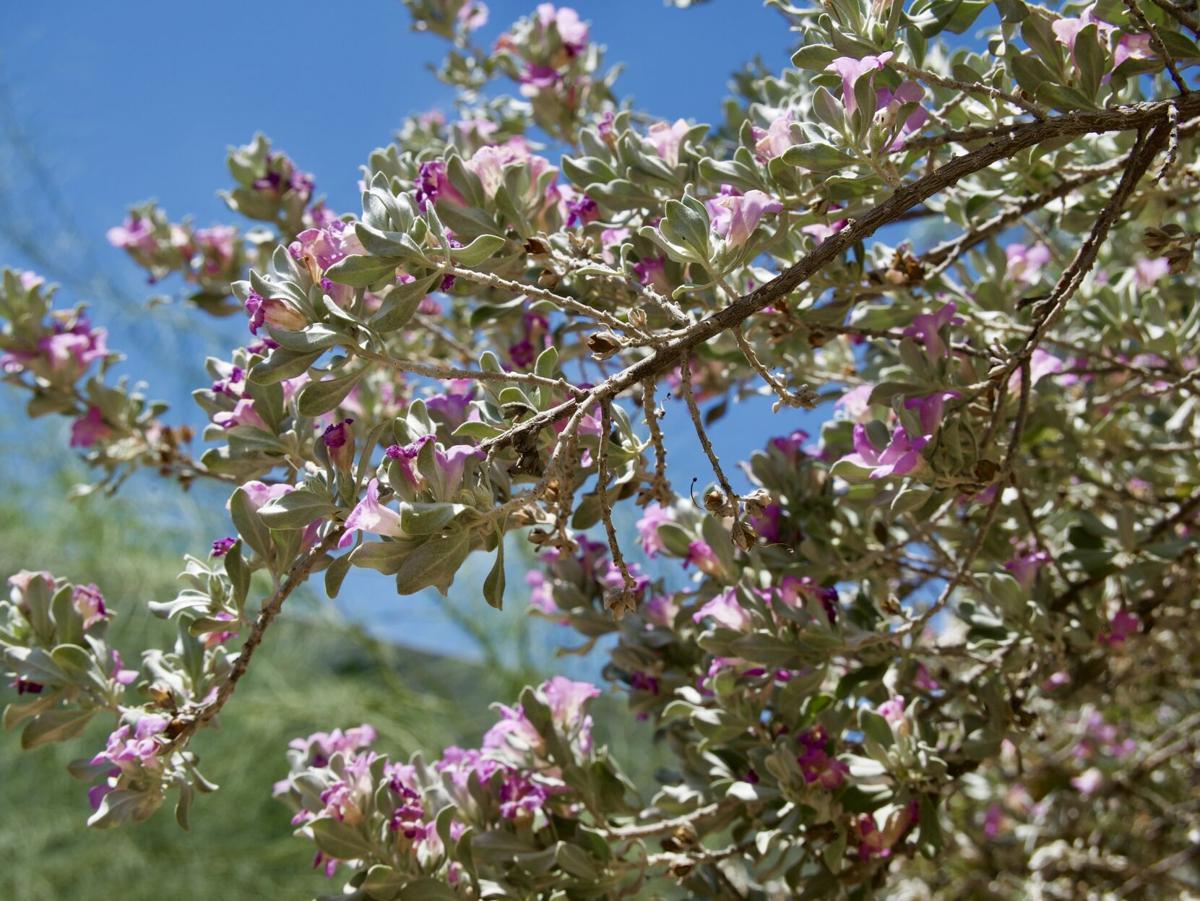
Fairy duster in brilliant bloom along the Babad Do’ag Trail. — Credit: Doug Kreutz/Arizona Daily Star
If you’ve got kids, no doubt you’ve already had to pick out cactus spines and glochids from their skin or had to nurse a few scratches. It’s no fun for kids (or parents) to have to deal with thorny plants. Despite what many think, it is possible to have a native plant garden that is prickly-free.
You don’t need to avoid spiny or thorny plants completely. Just keep them out of traffic areas (which is a good idea anyway). Narrow paths, driveways, entrances, and gathering spots should all be free of spiny plants, even if you don’t have small children.
Also, keep in mind that even if you don’t have any cacti in your yard, other people do. This means that tiny, invisible glochids are everywhere. In addition, many plants can be irritating to the skin, particularly if their stems are broken and they exude a liquid of some type. For these reasons, if your kids are helping you in the garden, make sure you all wear gloves and long sleeves. These will also protect you and your kids from the harsh desert sun and biting critters.
Here are some tips on what to plant in your desert garden to keep kids happy.
Native wildflowers: Most of our wildflowers are spine-free, and can be used to plant a gorgeous pollinator garden. You can get a combination of perennial wildflowers and annuals. Sennas, zinnias, marigolds, sages and penstemons are examples of native perennials that will bring lots of color to your yard. Native poppies, sunflowers, Gooding’s verbena and others are great annuals and will reseed themselves each year. You can also plant lots of milkweed to have a monarch butterfly waystation — a cool way for kids to learn about the lifecycle of these amazing butterflies. Check out this helpful guide from Spadefoot Nursery on how to get wildflowers established in your yard and when to sow which species.
Shrubs: There are tons of options here. Desert lavender, quailbush, hop bush, Texas rangers, woolly butterfly bush, yellow bells, fairy duster, the different daleas, and many others. The red bird of paradise has thorny stems, so you might want to avoid that one, but the yellow and the Mexican bird of paradise are fine.
Small Trees: Desert willow, Mexican bird of paradise, Anacacho orchid tree and featherbush are all thornless small trees that will look beautiful in your yard. For advice on how to plant them correctly, check out my article on how to plant a tree in Tucson. If you’re planting them now, make sure you have irrigation set up.
Tall trees: If you want really tall trees, live oak, velvet ash and arizona sycamore are possibilities, although they will require supplemental water. Avoid planting hybrid mesquites, even though there are thornless varieties. These crossbreed with our native mesquites and endanger our native habitats. Spadefoot nursery has different varieties of near-native oaks if you want to spice up your selection a little.
Vines: Queen’s wreath, yellow orchid vine and crossvine are good near-native options. Pretty much all of the vines that grow here other than bougainvillea are thornless. Queen’s wreath in particular will attract lots of bees, so keep that in mind if your kids are small and likely to pester the bees enough to get stung.
Grasses: Often overlooked, native grasses provide valuable habitat for small animals and are beautiful to look at due to their movement and soft texture. Some options include bamboo muhly, pink muhly, deer grass, purple threeawn and sideoats grama. Desert Survivors has a large variety of native grasses, although availability depends on the season, so you might want to call first. You can also check out the selection at Spadefoot Nursery.






